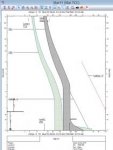Designer69
Senior Member
Can the TCCs of two different breakers overlap at the bottom instantaneous region or is this badly designed? see attached pic
Thanks

better pic: https://imgur.com/a/m6t7AIF
Thanks

better pic: https://imgur.com/a/m6t7AIF

